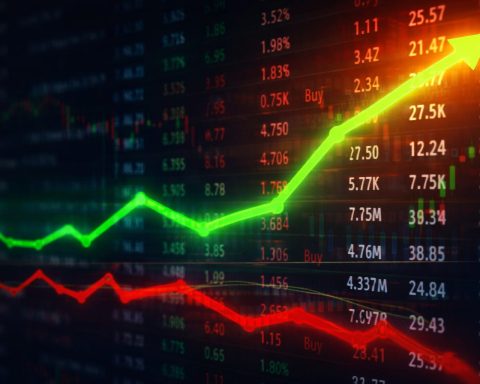- Oil hits 5-month lows: Brent crude fell to about $60 a barrel this week – its lowest since May – marking roughly a 3% weekly loss amid a broad market selloff [1] [2]. U.S. WTI crude likewise dipped under $58.
- Surprise Trump-Putin summit:U.S. President Donald Trump and Russia’s Vladimir Putin agreed to meet in coming weeks for talks on ending the war in Ukraine – a development that eases geopolitical risk and helped drive oil prices down [3] [4]. An analyst noted this could signal a softer U.S. stance on Russia and push prices lower if war tensions abate [5].
- India to cut Russian crude imports: Trump claims India’s PM Narendra Modi vowed to halt purchases of Russian oil, removing one of Moscow’s biggest buyers [6]. Washington has pressed India (and China) to stop funding Russia’s war by buying its oil [7]. Indian officials say any reduction will be gradual, but refiners are preparing to scale back Russian crude by year-end [8] [9].
- Record output and oversupply fears: The International Energy Agency (IEA) warns of a potential oil glut by 2026, as supply growth outpaces demand [10]. U.S. crude inventories jumped by 3.5 million barrels last week – far more than expected – and U.S. oil output hit an all-time high of 13.64 million barrels per day [11]. This surge in supply has added downward pressure on prices.
- Trade and economy concerns:U.S.-China trade tensions and global slowdown fears are also weighing on energy demand. “It just demolishes confidence,” said one commodities manager of the renewed trade strain, noting it could quickly drag on the U.S. economy [12]. Oil’s slide came as equities wobbled and investors grew cautious on signs of softer fuel consumption and broader market jitters.
Oil Slumps on Peace Talk Signals and Supply Surge
Oil prices tumbled to five-month lows this week, capping a third straight weekly decline. Benchmark Brent crude is hovering near $60 per barrel, down about 3% for the week, while U.S. WTI fell toward $57 [13]. Both indices are at their weakest levels since early May [14]. The selloff accelerated after a surprise geopolitical development: President Trump announced he and President Putin will hold a summit in Budapest within weeks to discuss ending the Ukraine war [15]. The prospect of a peace deal – or at least a de-escalation – has diminished the risk premium built into oil markets during the conflict.
Analysts say the mere hint of reduced hostilities is shifting sentiment. “Now that the two leaders are expected to meet, it could be a sign that the U.S.’s stance on Russia may ease. If so, that should push prices lower,” explained Tamas Varga of oil brokerage PVM [16]. In other words, traders are unwinding bets on supply disruptions or harsh new sanctions, expecting that talks might eventually open doors for Russian oil or at least lower wartime uncertainty. Another expert noted that the geopolitical dynamic is “beginning to redevelop,” causing some market participants to trim bullish positions [17].
At the same time, massive supply factors are hitting the market. The IEA’s latest outlook foresees a “growing supply glut” by 2026 if production keeps rising and demand growth slows [18]. Indeed, the U.S. government reported a much larger-than-expected build in crude inventories – stocks swelled by 3.5 million barrels last week, versus analysts’ forecasts of just ~0.3 million [19]. The record-high U.S. oil output of 13.64 million barrels per day is flooding the market [20], especially as refineries enter seasonal maintenance and consume less crude. “A modestly bearish report,” said UBS analyst Giovanni Staunovo of the inventory data, noting weaker implied demand even though a drawdown in distillate (diesel) stocks offset some of the crude glut [21]. In short, ample supply and softer demand are a recipe for lower prices absent new shocks.
Trump-Putin Meeting Looms as War and Trade Crossroads
The planned Trump-Putin summit – expected in the next two weeks – marks the most significant diplomatic step in the Ukraine conflict in months. Trump revealed Thursday that Putin agreed to meet in Hungary to talk “ending the war in Ukraine” [22], just a day before Trump was to consult Ukrainian President Volodymyr Zelensky at the White House [23]. The announcement caught markets off guard. Energy economist Tim Snyder noted “geopolitical tension between Russia, the United States and Ukraine is beginning to redevelop” in new ways, injecting uncertainty into traders’ calculus [24].
Some investors see a possible thaw in U.S.-Russia relations if talks progress – a stark change that could ultimately lead to easing sanctions or increased Russian oil flow globally. War risk premium is already fading. “There’s still a small degree of war risk premium in European markets… Any resolution [in Ukraine] will pare that back,” observed Shaniel Ramjee of Pictet Asset Management back in August when rumors of such a meeting first surfaced [25] [26]. That is now becoming reality. However, others caution that a protracted or inconclusive summit could just as easily spook markets if it raises more questions than answers. As one market strategist put it, Trump’s characterization of his recent call with Putin as “lengthy” added a layer of uncertainty – traders are unsure if a breakthrough or a stalemate is on the horizon [27].
Complicating matters, U.S.-China tensions have flared simultaneously, adding stress to the global outlook. Earlier this month, Trump escalated his trade war rhetoric, even floating new tariff hikes on Chinese goods – moves that rattled financial markets and darkened the demand outlook for commodities. “It just demolishes confidence,” said Jorge Montepeque of Onyx Capital, warning that escalating tariff battles could slow the economy and dent oil consumption [28]. This one-two punch of geopolitical uncertainty and economic jitters has kept traders on edge, even as the focus shifts to potential peace talks.
India Bows to Pressure on Russian Crude – Or Does It?
Another major twist in this saga is India’s stance on Russian oil. This week President Trump claimed a diplomatic victory, telling reporters that India’s Prime Minister Modi “assured” him New Delhi will soon stop buying Russian oil altogether [29]. Calling it “a big stop,” Trump framed India’s move as a key step in starving the Kremlin of petrodollars used to fund the Ukraine war [30]. India has been one of the largest buyers of Russian crude since 2022, stepping up purchases at a discount while the West shunned Moscow’s oil.
The alleged promise from Modi is significant – Russia counts on India, China and Turkey as lifelines for its energy exports [31]. If India genuinely halves or halts its intake, that would remove a big buyer of Russian oil, forcing Moscow to find other customers (likely at even steeper discounts) or cut output. “This is a positive development for the crude oil price as it would remove a big buyer of Russian oil,” noted IG market analyst Tony Sycamore, interpreting India’s shift as potentially bullish for non-Russian oil benchmarks due to tighter effective supply [32]. In other words, India not buying from Russia means it must buy elsewhere, which could boost demand for Middle Eastern, African, or U.S. oil and re-route trade flows.
However, questions remain about India’s commitment. Indian officials have been noncommittal – one government spokesman said discussions are ongoing and emphasized India’s need to safeguard affordable energy for its consumers [33]. In fact, Indian sources told Reuters on Friday that no immediate cuts have been implemented and refiners hadn’t received any official mandate yet [34] [35]. “Our consistent priority is to safeguard the interests of the Indian consumer in a volatile energy scenario,” an Indian spokesman said, hinting that India will move slowly and pragmatically [36]. India’s oil minister did request data on Russian import volumes this week – a sign they are evaluating how to taper off without disrupting their economy [37]. Analysts expect any substantial reduction might only show up in import figures by December or January if India gradually scales back new orders [38].
Tariffs and diplomacy are also in play. Russian oil has become the biggest sticking point in Trump’s broader trade negotiations with India [39]. The U.S. has slapped 50% tariffs on Indian goods, half of that explicitly to penalize India’s Russian oil purchases [40]. Trump even imposed some of the world’s highest trade levies on India earlier this year, calling them punishment for funding Putin’s war [41]. Delhi bristled at what it calls double standards – pointing out that Europe continued buying Russian gas for a long time and that trade should not be politicized [42]. Still, Modi’s government had aimed for a quick trade deal with Washington, and Trump has made clear that easing those tariffs may depend on India cutting off Moscow’s crude [43]. As leverage, India has pledged to boost imports of U.S. energy (LNG, oil and coal) to offset the Russian volumes [44].
Moscow, for its part, is openly courting India to keep the oil flowing. The Kremlin blasted Washington’s pressure tactics, saying preventing countries from buying Russian crude “violates free trade” [45]. Putin’s spokesman Dmitry Peskov insisted Russia will happily sell oil at cheaper prices to any nation being pushed by Trump to shun Russian exports [46]. And in Moscow this week, Putin reminded an energy forum that Russia remains “one of the leading oil producers” despite ‘unfair’ sanctions [47]. In short, Russia is signaling it won’t be easily squeezed out – it may cut deals or discount its oil further to retain market share in India and beyond.
Outlook: Volatility Ahead as Markets Weigh Peace vs. Glut
With oil prices on the ropes, attention now turns to what comes next. The upcoming Trump-Putin summit could be a make-or-break moment. A breakthrough towards peace in Ukraine – while far from guaranteed – would likely remove more geopolitical risk from markets and could even pave the way for some sanctions relief or higher Russian export quotas, further boosting global supply. “If the U.S.’s stance on Russia eases, that should push prices lower,” analyst Varga noted of the evolving situation [48]. On the other hand, if talks falter or conflict intensifies, markets might quickly price back in a risk premium, potentially jolting prices upward again on fears of supply disruptions or stricter sanctions.
Meanwhile, the fundamental supply-demand picture is skewing bearish. Global demand growth is under threat from high interest rates and sluggish economies, while output is robust – not just in the U.S. but also from key OPEC+ players. (Notably, Russia and Saudi Arabia have been coordinating production cuts for months, but those efforts haven’t prevented this price slide.) The IEA’s warning of oversupply by 2026 suggests that unless OPEC and allies cut deeper or demand surprises to the upside, the market could see a persistent glut in coming years [49]. In the near term, U.S. inventories swelling and refinery maintenance season mean a lot of oil is looking for a home. “Implied oil demand [is] considerably weaker” lately, the UBS team observed, indicating consumers and businesses are burning less fuel than anticipated [50].
Market sentiment is accordingly fragile. Beyond oil itself, energy equities have slumped in tandem. Major oil stocks like ExxonMobil have pulled back – Exxon’s share price dipped to around $110 this week, near its lowest level in over a month [51] – reflecting the weaker price outlook and earnings forecasts. Broader stock indexes have been choppy as investors balance recession worries against hype in other sectors (like tech and AI). Regional banking strains in the U.S. and the prospect of a government shutdown have added to the risk-off mood, leading some traders to seek safe havens despite oil’s slide [52].
Forecasters are divided on where oil goes from here. Some see the potential for a rebound if winter heating demand picks up or if OPEC+ takes action to shore up prices. Others argue any rallies may be short-lived unless the macroeconomic clouds clear. For now, the path of least resistance seems lower: plentiful supply, softening demand, and a chance at peace are a bearish trifecta. As always, unforeseen events – from a sudden flare-up in geopolitical tensions to weather disruptions or surprise policy moves – could whipsaw prices.
The next major catalyst is likely the Trump-Putin meeting and its fallout. Traders will be watching headlines from Budapest carefully. A hint of progress toward ending the Ukraine war could send oil bulls running for cover, while any breakdown could just as swiftly reignite anxiety. In the background, keep an eye on India’s import data and any follow-through on Modi’s reported pledge – a significant drop in Russian oil purchases by India would confirm a real shift in trade flows, potentially tightening effective supply of non-Russian crude and altering market dynamics.
For now, consumers can welcome a bit of relief at the pump as crude prices retreat. But the coming weeks of diplomacy and deliberation will determine if this oil slump is the start of a longer-term downtrend or just the lull before the next storm in energy markets. As one expert summed up the uneasy outlook: “Volatility is here to stay – any sign of peace or escalation could swing this market in a heartbeat”.
Sources: BBC News [53] [54]; Reuters [55] [56] [57]; Bloomberg/TechStock² [58]; Stockchase/Market data [59]
References
1. www.reuters.com, 2. www.reuters.com, 3. www.reuters.com, 4. www.reuters.com, 5. www.reuters.com, 6. www.reuters.com, 7. www.reuters.com, 8. www.reuters.com, 9. www.reuters.com, 10. www.reuters.com, 11. www.reuters.com, 12. www.reuters.com, 13. www.reuters.com, 14. www.reuters.com, 15. www.reuters.com, 16. www.reuters.com, 17. www.reuters.com, 18. www.reuters.com, 19. www.reuters.com, 20. www.reuters.com, 21. www.reuters.com, 22. www.reuters.com, 23. www.reuters.com, 24. www.reuters.com, 25. ts2.tech, 26. ts2.tech, 27. ts2.tech, 28. www.reuters.com, 29. feeds.bbci.co.uk, 30. feeds.bbci.co.uk, 31. feeds.bbci.co.uk, 32. www.reuters.com, 33. feeds.bbci.co.uk, 34. www.reuters.com, 35. www.reuters.com, 36. feeds.bbci.co.uk, 37. www.reuters.com, 38. www.reuters.com, 39. www.reuters.com, 40. www.reuters.com, 41. feeds.bbci.co.uk, 42. feeds.bbci.co.uk, 43. www.reuters.com, 44. www.reuters.com, 45. feeds.bbci.co.uk, 46. www.reuters.com, 47. feeds.bbci.co.uk, 48. www.reuters.com, 49. www.reuters.com, 50. www.reuters.com, 51. stockchase.com, 52. ts2.tech, 53. feeds.bbci.co.uk, 54. feeds.bbci.co.uk, 55. www.reuters.com, 56. www.reuters.com, 57. www.reuters.com, 58. ts2.tech, 59. stockchase.com










